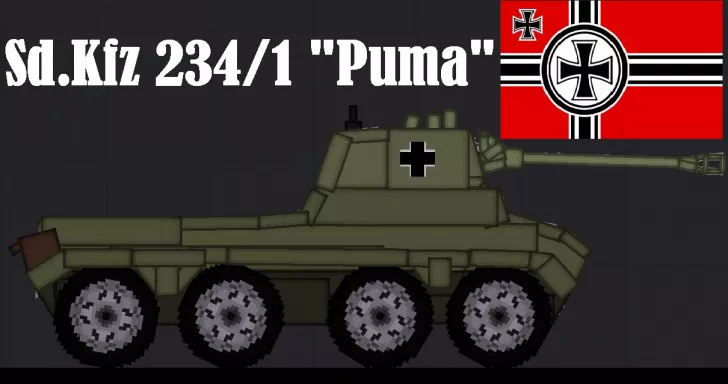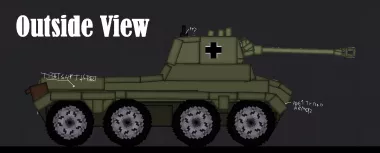TET SdKfz 234 Puma (GER) for People Playground

This new armored car was seen as a successor to the eight-wheeled (8×8) Panzerspähwagen Sd.Kfz.231. Among other priorities, better protection and heavier armament were viewed as crucial for the new armored car. But this model also had to comply to a specification from 1940, which requested a tropicalized armored car. Tatra was placed in charge of the overall design, while Büssing developed the body, and Daimler-Benz and Schichau devised a new turret. Three engines were tested, the third being tropicalized in the spring of 1942. However, in June 1942, priorities changed and the final production machines had a more conventional air-cooled engine, capable of handling a wide range of temperatures (extreme heat and cold), better suited to the Russian front.
The production vehicle was heavier and bulkier than the Sd.Kfz.231, with mudguards that went along the side from end to end, with four storage compartments located inside. Because of the lack of resources necessary to build the specified new turret, housing a 50 mm (1.97 in) gun, the first series was equipped with the Sd.Kfz.222 Hängelafette 38 barbette instead. The engine was a Tatra air-cooled V12 diesel, with a net power of 220 hp@2,250 rpm, and a power-to-weight ratio of 21 hp/ton.
The transmission was by claw, with 6 forward and 6 reverse gears. Fuel capacity was 240 liters, with a consumption of 40 liters/100 km. The radio was a FuG Spr Ger “A”2 set with a FuG 122 aerial. On the second version, famously known as the Puma, the main gun was a 50 mm (1.97 in) KwK 39/1 L/60. The turret had a manual traverse due to its small size, and -10° to +20° depression/elevation. Smoke dischargers were often mounted on top. On trials, the Puma was found capable of fording 3 feet 11 in (1.2 m) deep, crossing a trench 4 ft 5 in (1.35 m) wide and climb inga vertical obstacle of 1 feet and 7.75 inches, or 0.5 m.
Y-Shoot cannon
I-Shoot MG's
,.-Move Cannon
M-Move ̶T̶a̶n̶k̶ Armored Vehicle
File info
- Added by: Den Martin
- Author: Tetrisen Uranu
- Mod version: 23.01.23
- File format: ZIP
- File size: 1.0 mb
- Source: Go to



